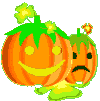All of us are familar with the term "witch". Derived from the Old English word 'wicce', the term simply refers to a woman, who practices any type of sorcery. In ancient days, activities like healing, divination, magic, alchemy, necromancy, spells, herbal cure or meditation were also included in the scope of sorcery. Thus, any woman indulging in these sort of activities were regarded as witches.
Long before the birth of modern medicine, people relied on various sources to cure themselves of various diseases. Many learned men and women often tried to develop different artificial medicines and therapies remedies to treat their maladies. Such women were named "witch" by common people, a term that stood for "wise". They were looked at with wonder, respect and most often, with hatred and contempt that gained more ground with the introduction of Christianity in the Western world.
Christianity looked down on witches and regarded them as 'sinners', believing that such women practiced black magic.
Wiccan practices like necromancy involved tampering with human corpses that was seen as unethical and ungodly. When Christianity became dominant, the church tried to stop such practices and the wiches were branded as sinful beings who made a pact with Satan to gain supernatural powers. Such abilities, though often used for the benefit of humans, were deemed as unholy.
In medieval Europe, women who were percieved as witches were often burnt at the stakes in villages. Many innocent women were also killed in this way for ulterior motives, the prime example of which is the great Joan of Arc (1412-1431), the brave French lady who organized French resistance to the English to have Charles VII crowned king.
It is no wonder that these mysterious creatures have an association with Halloween. Legends tell us of witches meeting twice during a year when the seasons changed, once on April 30 - the eve of May Day and again on October 31 - All Hallow's Eve. Powerful beings as they were, the witches were supposed to fly on their broomsticks to these nocturnal gatherings, hosted by the devil. Similar colourful stories, most of which were the products of superstitions, told of witches casting spells on unsuspecting people, transforming themselves into different forms and causing other magical mischief.
When European immigrants came to settle in America, they brought along their belief in witches as well as other spooky ideas such as the Jack-o'-lantern and black cats. The Native Americans, who harboured similar thoughts, found their ideas supported by their guests and the result was an amalgamation of beliefs. It was said that putting out your clothes on wrong side and walking backwards on Halloween night could ensure that you met a wich as the clock struck twelve.
Today, witches and witchcraft constitute a fun concept than a reality, although wiccan practices are still reported to be existing in many parts of the world. Special witch costumes are sold during Halloween in the USA to satisfy thousands of women across the country who want to dress up as witches to spook their beholders on October 31 and contribute to the charm of the Halloween parties they attend. From being the subject of hatred and animosity, they have become much loved entities who are featured in children's books and also shown as beneficient creatures in soaps and movies.
Back to Halloween Main
|
|

Looking
4 Halloween Costumes?? Try The Following

|

